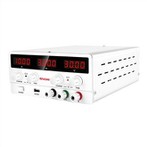What is the difference between a LED switch mode power supply and a conventional switch mode power supply?
High frequency of LED switching power supply is the direction of its development. High frequency makes the switching power supply miniaturized and allows the switching power supply to enter a wider range of application fields, especially in the high-tech field. It promotes the miniaturization of high-tech products. Lightweight. In addition, the development and application of switching power supplies are of great significance in saving energy, saving resources and protecting the environment. The electronic devices used in LED switching power supplies are mainly: LED diodes, IGBTs and MOSFETs. SCR has a small number of applications in switching power supply input rectification circuits and soft-start circuits. GTR is difficult to drive and has low switching frequency, so it is gradually replaced by IGBT and MOSFET.
The difference between ED switching power supply and ordinary switching power supply
The biggest difference is that the LED power supply is a constant current source, while the general switching power supply is a constant voltage source.
The difficulty in designing LED switching power supplies is size and price.
LED switching power supply: 1. Constant current is required. 2. Low temperature, low heat and long life. 3. Small size. 4. Waterproof, anti-corrosion and anti-static. 5. High-frequency pollution. Ordinary switching power supplies have serious high-frequency pollution. Even if the output DC is filtered with an inductor and a large capacitor, the waveform is very complex. With a poor power supply, the power supply itself may not be bad, but the LED life and light attenuation will be greatly reduced.
In fact, the LED switching power supply circuit is mostly composed of a switching power supply circuit + a feedback circuit. The feedback circuit takes samples from the load and adjusts the pulse duty cycle or frequency of the switching circuit to achieve the purpose of controlling the output of the switching circuit.
Three conditions for LED switching power supply
1. Switch: Power electronic devices work in a switching state rather than a linear state.
2. High frequency: Power electronic devices work at high frequency rather than low frequency close to power frequency.
3. DC: The switching power supply outputs DC instead of AC.





